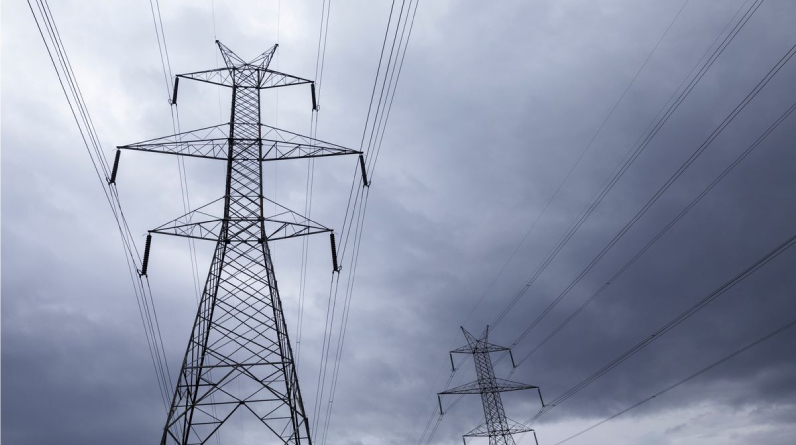1. Stories about energy from around the world, condensed
As a result of voltage fluctuations, Pakistan’s electrical grid failed, leaving an estimated 220 million people without electricity for an entire day. It was South Asia’s third near-total grid failure in as many months.
American lawmakers from both parties have introduced a resolution to reverse President Joe Biden’s decision to temporarily waive tariffs on solar panels imported from four countries in Southeast Asia. This action is meant to help domestic solar manufacturers who have been losing ground to foreign competitors who can offer cheaper panels.
Al Jazeera reports that South African President Cyril Ramaphosa has said his government plans to import electricity and get more energy from renewable sources. It occurs during a time of prolonged energy crisis that has resulted in widespread blackouts across the country.
The blueprints for Germany’s second major hydrogen production plant have been made public. In order to produce hydrogen, the €1 billion ($1.1 billion) facility would use solar parks to harness renewable energy.
As a result of a prolonged cold snap, South Korea plans to increase energy vouchers by 50 percent to help low-income families pay for their heating bills. Since 2021, the price of natural gas around the world has increased by nearly ten times, and the government claims that this has necessitated a corresponding increase in utility bills.
Italy plans to reevaluate and potentially expand existing relief measures to assist families and businesses in dealing with rising energy costs. Economy Minister Giancarlo Giorgetti said that the government is also considering actions to encourage people to spend less money on their energy bills.
A $540 million deal for the expansion of natural gas pipelines and related infrastructure linked to Argentina’s Vaca Muerta basin has been agreed upon, the country says. Argentina hopes to expand its economy and lessen its dependence on costly energy imports, and the country’s massive shale formation is seen as a key to doing both.
When cold weather increases electricity demand, the National Grid in the United Kingdom asks that coal-fired power plants be warmed up as a precaution. Customers are being incentivized to reduce their energy consumption through a new programme.
2. As part of an effort to catch up to the United States, the European Union has pledged to increase funding for renewable energy.
Ursula von der Leyen, president of the European Commission, has stated that the EU intends to prevent businesses from relocating to the United States by mobilising state aid and a sovereign fund for renewable energy companies as part of a new Net-Zero Industry Act. Her statement at the Annual Meeting of the World Economic Forum in Davos comes as high energy prices have prompted the European Union to impose revenue caps on wind and solar generators in an effort to safeguard consumers.

While both the US and Europe have committed to significant increases in their use of renewable energy, the level of financial support available to developers is highly variable, and the EU is also experiencing permitting delays. The Inflation Reduction Act, signed into law by US Vice President Joe Biden, provides tax credits to domestic wind and solar projects and their associated manufacturing facilities. Since European countries offer no direct incentives for domestic manufacturing, the United States has become a much more appealing location for wind supply chain investments.
Also Read : Students are Seeking Knowledge About Climate Change Teachers rarely receive adequate preparation
As a result of the European Union’s state aid rules, member states are prohibited from offering direct aid to their domestic businesses, and the European Commission will soon propose to “These rules need to be “temporarily adapted” in order to “speed up and simplify,” as stated by von der Leyen. After that, she said, “European industries need competitive offers and incentives to remain appealing in the face of rising competition from outside the European Union.
3. Emissions limits for coal-fired power plants are going to be established in Indonesia.
As a first step toward establishing a mechanism for domestic carbon trading, Indonesia plans to issue emission quotas for some coal-fired power plants by the end of January. The country has set an ambitious goal of reducing carbon emissions by 31.89% on its own or 43.2% with international support by the year 2030, despite being one of the world’s largest emitters of greenhouse gases. That’s higher than the pledge it made in 2015 to reduce emissions by 29%, or 41% with international help, under the Paris Agreement.
A senior ministry official has stated that the initial phase of carbon trading will apply to coal power plants with a minimum 100 MW capacity that are directly connected to power grids owned by state utility Perusahaan Listrik Negara. This year, 99 coal plants with a total installed capacity of 33.6 GW could participate in the carbon market.
Carbon emission allowances can be traded between power plants with excess and plants with deficits. Direct carbon trading between emitters is legal in Indonesia, and the government plans to launch a carbon exchange this year. However, there are currently no agencies in place to monitor or validate emissions.
The Coal to Renewables Toolkit from the Forum analyses the best practises for coal plant optimization and repurposing.
4. Energy-related topics are covered in greater depth in Agenda.
Given the intermittent nature of renewable energy sources, the need for energy storage is growing. Rather than relying on batteries, consider these four creative alternatives for storing renewable energy.
Corporations have always had the option of switching to renewable energy sources or sticking with fossil fuels. However, Sarah Golden, Senior Energy Analyst at GreenBiz Group, says that in this era of fluctuating prices, low-cost, reliable sources like wind and solar are becoming a more attractive option.
However, as the events of 2022 showed, geopolitics, investment decisions, and economic development imperatives can derail even the best-laid plans for a comprehensive energy transition. Therefore, a pragmatic, agile, ambitious, and systemic approach will be required to achieve long-term sustainability targets.
To expedite the action required across business and government to deliver the energy system of the future, the Forum launched two accelerators, Clean Power & Delivery and Electrification, at Davos.
